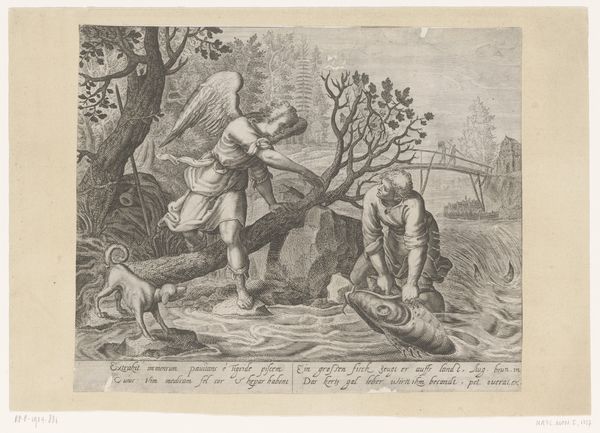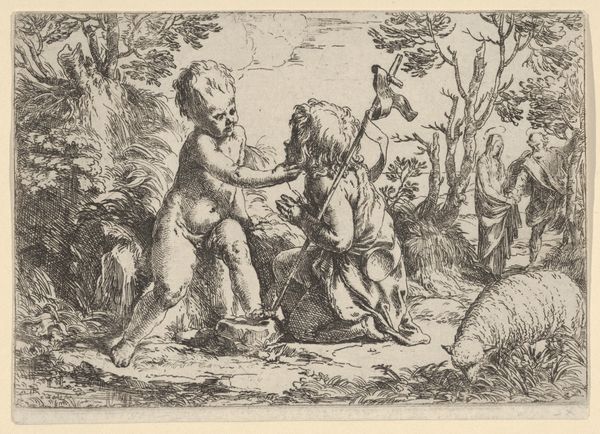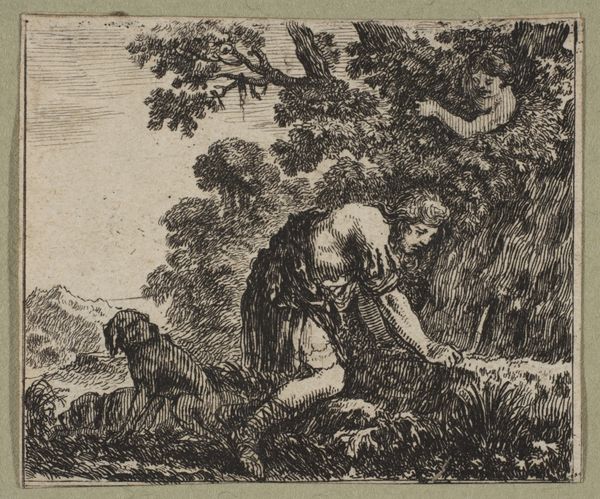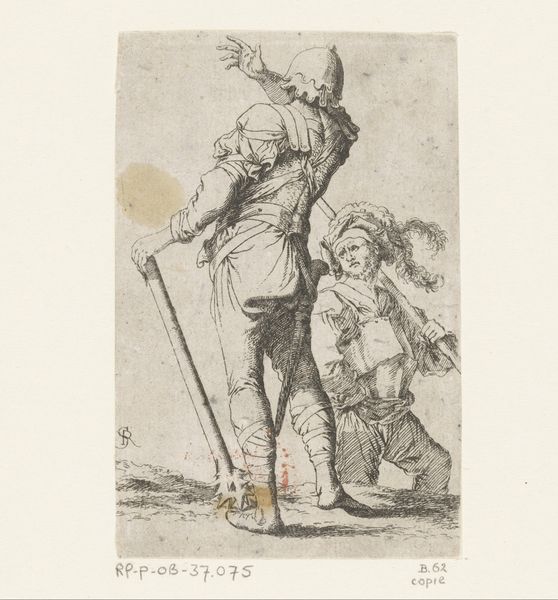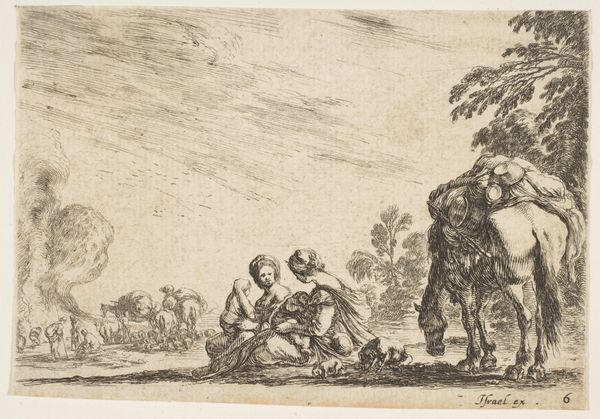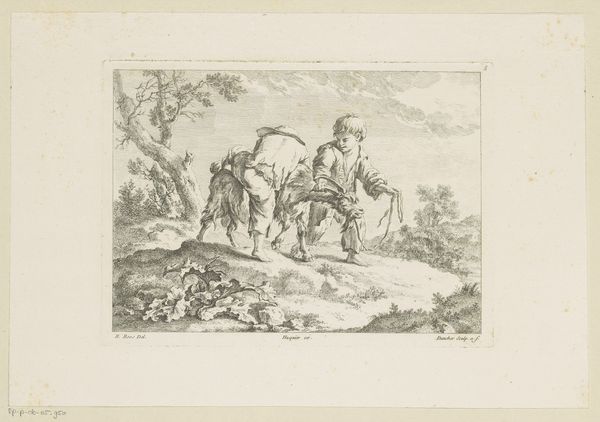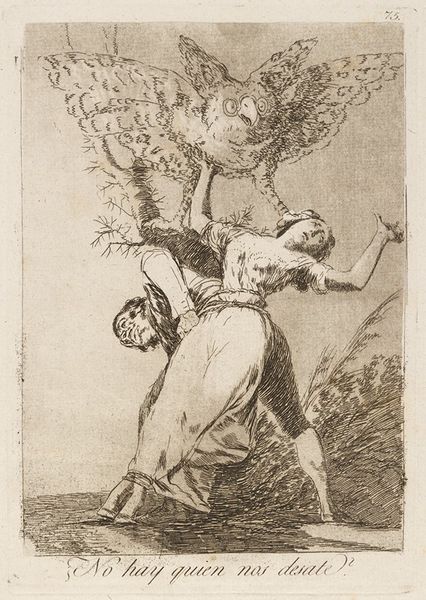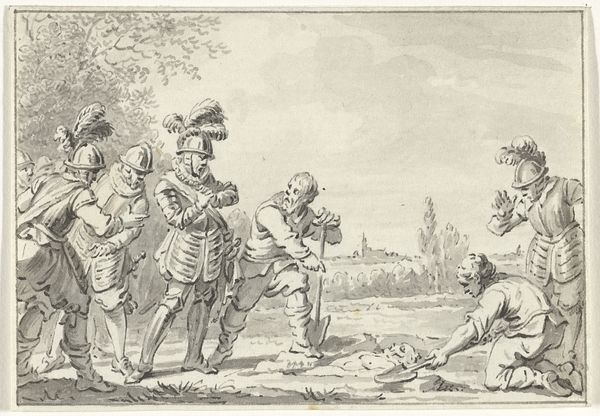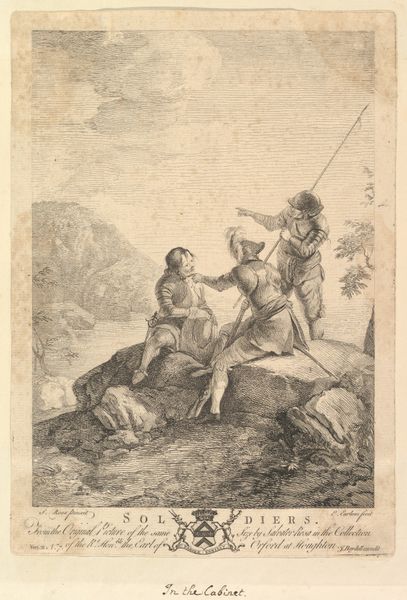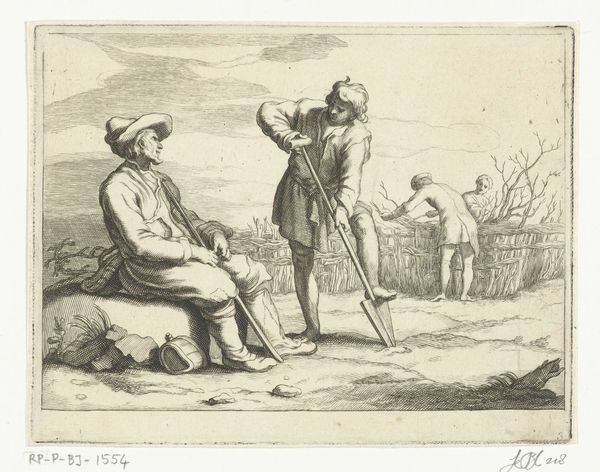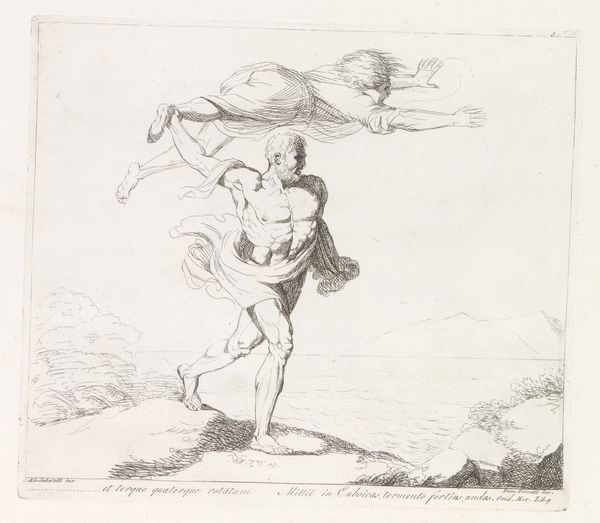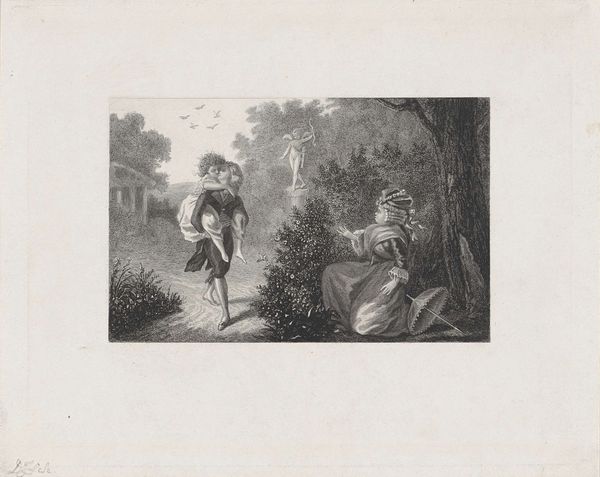
Scène uit de Commedia dell'Arte met jongen die slaag krijgt van een man c. 1710 - 1800
0:00
0:00
drawing, pencil
#
drawing
#
narrative-art
#
baroque
#
caricature
#
pencil sketch
#
figuration
#
pencil
#
genre-painting
#
academic-art
Dimensions: height 134 mm, width 183 mm
Copyright: Rijks Museum: Open Domain
Curator: Immediately, I'm struck by how the subdued pencil strokes imbue this scene with a sense of everyday life. The overall softness evokes an accessible warmth. Editor: I’m drawn in by what appears at first to be innocuous. But then a chilling realization sinks in about this snapshot of social hierarchies and physical correction that normalize abuse. Curator: This sketch is entitled “Scène uit de Commedia dell'Arte met jongen die slaag krijgt van een man,” roughly translating to "Scene from the Commedia dell'Arte with a boy getting beaten by a man.” Gerardus Josephus Xavery rendered it sometime between 1710 and 1800, in pencil. What specific elements stand out to you from a historical context? Editor: Well, placing it within the Commedia dell'Arte context immediately highlights the use of stock characters and scenarios. This drawing seems to depict domestic violence almost as performance. What’s fascinating is how these theatrical archetypes mirror—and simultaneously normalize—power dynamics prevalent in 18th-century European society. The boy getting punished becomes almost a routine social exercise. Curator: Absolutely, and notice the man's mask, typical of the comedic theater tradition. These masks are symbols – not just of a role but of specific traits. Do you see continuity between, say, the violent figure depicted here, and similar figures or their associated characteristics, in other artforms or cultural narratives from around that time, or even today? Editor: Absolutely. It’s disturbing how clearly one can trace the echoes of this kind of performative violence, this kind of masked aggression through art history – especially concerning gender and age dynamics. I can easily imagine this scene, with updated costumes, playing out in different contexts. Curator: This invites consideration on continuity – these symbols carrying encoded messages and psychological weight from past to present. Are we destined to perpetually recycle archetypes of victim and abuser? Editor: Perhaps art like this functions as both reflection and warning. We see the past, understand its components and symbolic language and can decide how – or whether – we continue that trajectory. It becomes an argument for deconstruction and reassessment. Curator: Precisely. Spotlighting, in all senses of the word, is itself an act of change. I appreciate how this detailed scene encourages consideration about performance and lived experience – its reverberations continuing across time. Editor: Indeed, by shedding light on the theatrical and deeply human elements at play here, we can reflect on their manifestations in culture today and ask difficult but necessary questions about societal transformation.
Comments
No comments
Be the first to comment and join the conversation on the ultimate creative platform.
